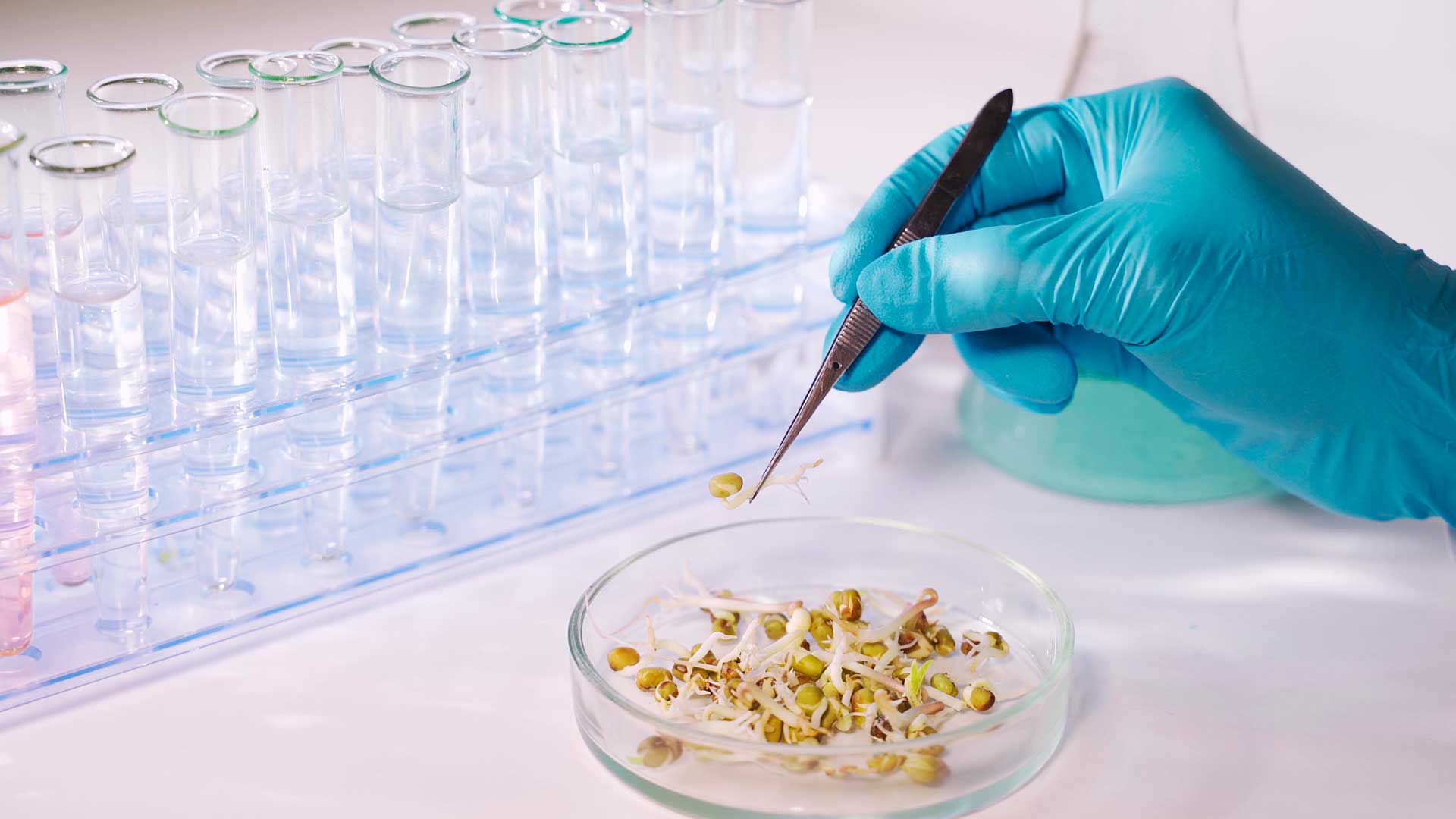GMO and non-GMO: Pros and Cons

Many consumers in the European Union, regardless of their level of education or nationality, take a critical distance from genetic engineering in food production. Several surveys have repeatedly shown that their vast majority do not want GM foods.[1]
GMOs create a path that leads to advantages and benefits, but also raises extremely important questions. Even over 20 years after the introduction of gene plants, we still lack on an extensive study on effects of genetically modified plants on humans. Genetic engineering is a tricky issue and not everyone has specialized knowledge. It is therefore particularly easy to influence consumer opinions with little effort.
PROS
Most of the genetically modified plants present the following benefits:
- Tolerance to atmospheric stress, such as extreme temperatures, salinity, drought and floods;
- Resistance to viruses, fungi and bacteria;
- Herbicide tolerance;
- Insect resistance.
Proponents predict that genetic engineering would increase yields in the fields due to the characteristics above, although this would not reach the desired level of food security. Hunger and malnutrition are issues that often require additional social and political strategies.
Efforts are needed to maintain and develop varieties and cultivation methods should be adapted to the local needs together with the local population. The only efficient way to reduce the proportion of undernourished locally is by using conventional means – for example by cultivating traditional food plants such as cassava root, but also through targeted support projects, educational programs, nutritional advice and political activities. A multi-dimensional strategy is necessary that creates suitable, specific activities for each situation.
CONS
On the other hand, the use of GMOs brings risks, such as:
- Changes in the interaction between plant and biotic environment:
- Persistence and invasiveness;
- Selective advantages or disadvantages;
- Transfer of genes;
- Interactions with target organisms (e.g. induction of resistance in pests to which plants are resistant);
- Interactions with non-target organisms (e.g. effects on bees and other non-pest insects, with consequences to biodiversity);
- Interactions with the soil ecosystem with consequent biogeochemical effects.
- Changes in the interaction between plant and abiotic environment:
- Alterations in Greenhouse Gas Emissions;
- Variations in sensitivity to climatic effects;
- Modifications in sensitivity to soil abiotic factors (salinity, minerals …).
- Harm to human or animal health:
- Toxicological effects;
- Allergenicity;
- Changes in nutritional value;
- Transfer of antibiotic resistance.
In addition, once genetically modified plants have been introduced into the world, they often can no longer be retrieved: they can actively spread, multiplied, passing on their genetically modified properties to other organisms and influence each other, with all, largely unexplored consequences for the environment, animals and people.
All new genetically modified crops have to be checked for harmlessness to humans, animals and the environment before they are approved, but many scientists describe the current regulations for risk assessment as insufficient. Numerous studies have found that the Crispr / Cas9 gene scissors when lost are not as accurate as their users often think[2].
The Counterpoint: Climate Change
Farmers are already using the variety of conventional plants that are adapted to their respective environmental conditions such as drought, flooding or high salinity in the soil. Drought-tolerant crops grown conventionally already exist. The genetic engineering industry has promised a lot, but so far has not yet presented a solution for a secure return on climate change.
New genetic engineering methods, so-called genome editing, are to lead more quickly to plants that can withstand abiotic stress such as drought and high salinity. They are placed in the foreground as the solution to the problem of climate change. In practice, companies continue to focus on commercial applications such as herbicide tolerance or feed quality. The promotion of alternative research in the sense of sustainable agriculture with more comprehensive, multi-dimensional approaches seems more effective here.
Regarding food quality, what we can say is that genetic engineering is not necessary for a healthy diet. In our industrialized nations, the variety and range of good quality food have never been as large and available all year round as it is today. Thanks to improved food hygiene, quality assurance systems and optimized detection methods, our food had reached a high safety standard even before the introduction of genetic engineering.
The savings in weed killers (herbicides) in the cultivation of herbicide-resistant crops (HR crops) highlighted by seed companies is controversial. Various studies show that the results are dependent on various factors, such as the growing conditions and climatic conditions at the location. Figures show a significant increase in spray consumption since the introduction of genetic engineering in the field.
Due to the increasing development of resistance in weeds to the herbicides used, farmers not only have to increase the dose, but they also have to use additional active ingredients. Another consequence is that the genetic engineering industry is developing crops that can withstand higher doses of herbicides or are multi-resistant to various herbicides. This also promotes the emergence of multi-resistant “super weeds”. Furthermore, the constant confrontation of the insects with the Bt poison (certain GM crops produce toxins that are lethal to insects) has already led to the emergence of resistant pests. Instead of using fewer sprays, these pests need to be combated with other or additional pesticides.
ProTerra Standard
Created in 2006, the ProTerra Standard has a long-standing history and experience in promoting sustainability in the food and feed supply chain and segregated non-GMO materials. Among others, one of its aims is to secure the supply of sustainably produced, fully traceable, non-GMO ingredients for feed and food.
Principle 5 ensures that genetically modified organisms (GMOs) and their by-products must not be used in the production of ProTerra certified products (this includes technologies such as CRISPR/Cas9). Besides, our packaging label is a mean by which brands can communicate the non-GMO and sustainability commitment directly to consumers and stakeholders.
References